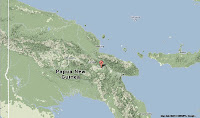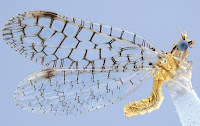Podocarps are the second largest family of Conifers today, with 194 species in 19 genera known. Unlike most Conifers, Podocarps are entirely tropical distribution, with most species being found in montain rainforests, though they are also found in lowland forests. The group is quite ancient, becoming widespread in both hemispheres early in the Jurassic, which suggests an origin late in the Triassic or very early in the Jurassic, though molecular evidence suggests most living species are descended from a common ancestor that lived in the late Cretaceous ot early Palaeocene.
In a paper published in the journal Scientific Reports on 30 August 2016, Long Li and Jian-Hua Jin of the State Key Laboratory of Biocontrol at Sun Yat-sen University, Cheng Quan of the Research Center of Paleontology & Stratigraphy at Jilin University and Alexei Oskolski of the Department of Botany and Plant Biotechnology at the University of Johannesburg and the Komarov Botanical Institute of the Russian Academy of Sciences, describe the discovery of fossil Podocarp wood from the Donghuai coal-mine in Baise City in Guangxi Province.
The wood is described as Podocarpoxylon donghuaiense, where Podocarpoxylon is an existing genus name applied to fossil Podocarp wood, and donghuaiense means 'from Donghaui'. The wood comes from the Eocene Nadu Formation, and is the first described fossil Podocarp wood from China, though fossil Podocarp leaves have been described from the Eocene of Hainan Island and Guangdong Province in South China.
Wood structure of Podocarpoxylon donghuaiense. Transverse section showing distinct growth rings (arrow). Scale bar = 400 μm. Li et al. (2016).
Podocarpoxylon donghuaiense is unusual in a Podocarp wood, in that it has growth rings, something not seen in modern or previosly described wood of the group, and which implies the wood comes from a tree that was growing in a seasonal climate. However the wood shows enough features distinctive to Podocarp woods, such as smooth horizontal and tangential walls of ray cells without indentures, cupressoid and taxodioid pits on cross fields, that Li et al. are confident in its assignment to the Podocarpaceae.
See also...
 Xenoxylon junggarensis: A new Gymnospermous fossil wood from the Late Triassic Huangshanjie Formation of Xinjiang. Plant fossils are considered to be extremely important in the...
Xenoxylon junggarensis: A new Gymnospermous fossil wood from the Late Triassic Huangshanjie Formation of Xinjiang. Plant fossils are considered to be extremely important in the... Diptocarp wood from the northwest of India. Diptocarps, Dipterocarpaceae, are the dominant trees of modern South
and Southeast Asian rainforests, and are also found in South America, Africa
and Madagascar. The group reach their maximum diversity today on the island of
Bornea, where there are over 280 described species of Diptocarp, but the
earliest...
Diptocarp wood from the northwest of India. Diptocarps, Dipterocarpaceae, are the dominant trees of modern South
and Southeast Asian rainforests, and are also found in South America, Africa
and Madagascar. The group reach their maximum diversity today on the island of
Bornea, where there are over 280 described species of Diptocarp, but the
earliest... Wood fossils from the Plio-Pleistocene of northwest India with African affinities. India separated from Africa about 130 million years ago, and was
effectively an island continent until its collision with Eurasia in the Middle
Cenozoic. Nevertheless the modern flora and fauna of India show strong
affinities with that of Africa, and while there was probably...
Wood fossils from the Plio-Pleistocene of northwest India with African affinities. India separated from Africa about 130 million years ago, and was
effectively an island continent until its collision with Eurasia in the Middle
Cenozoic. Nevertheless the modern flora and fauna of India show strong
affinities with that of Africa, and while there was probably...
Follow Sciency Thoughts on Facebook.















































